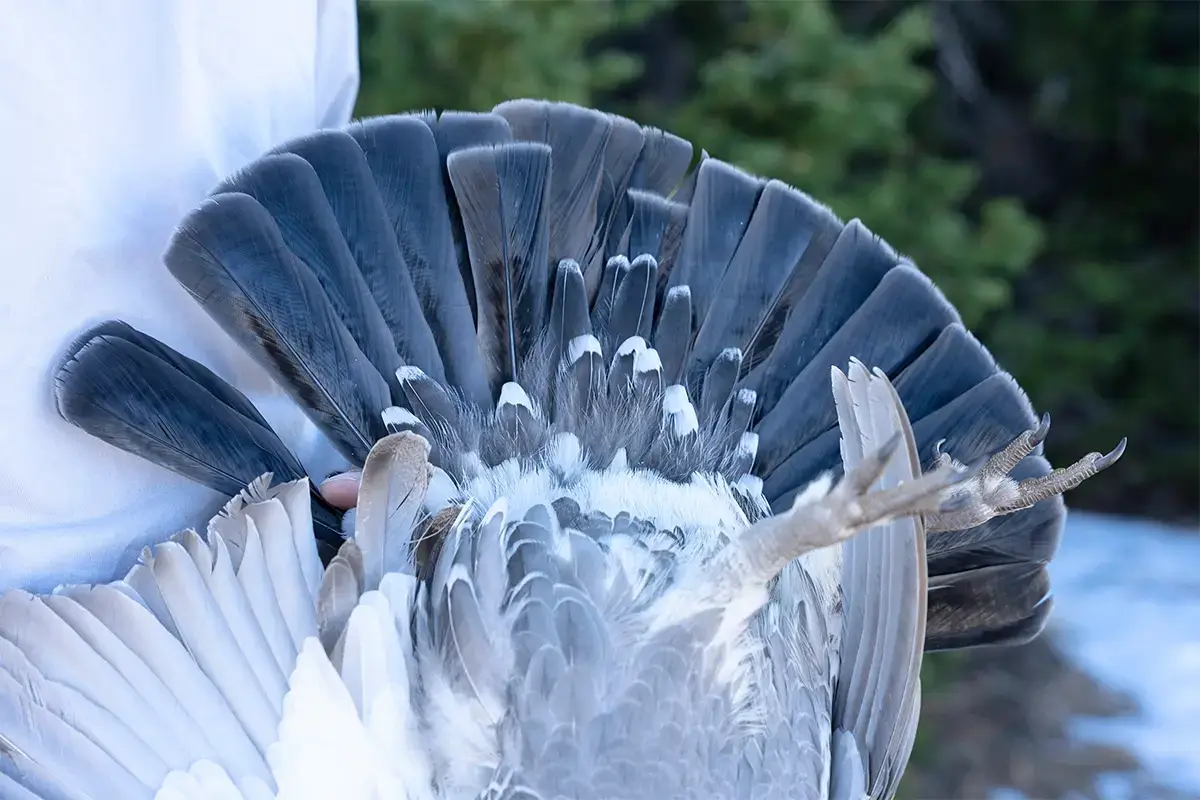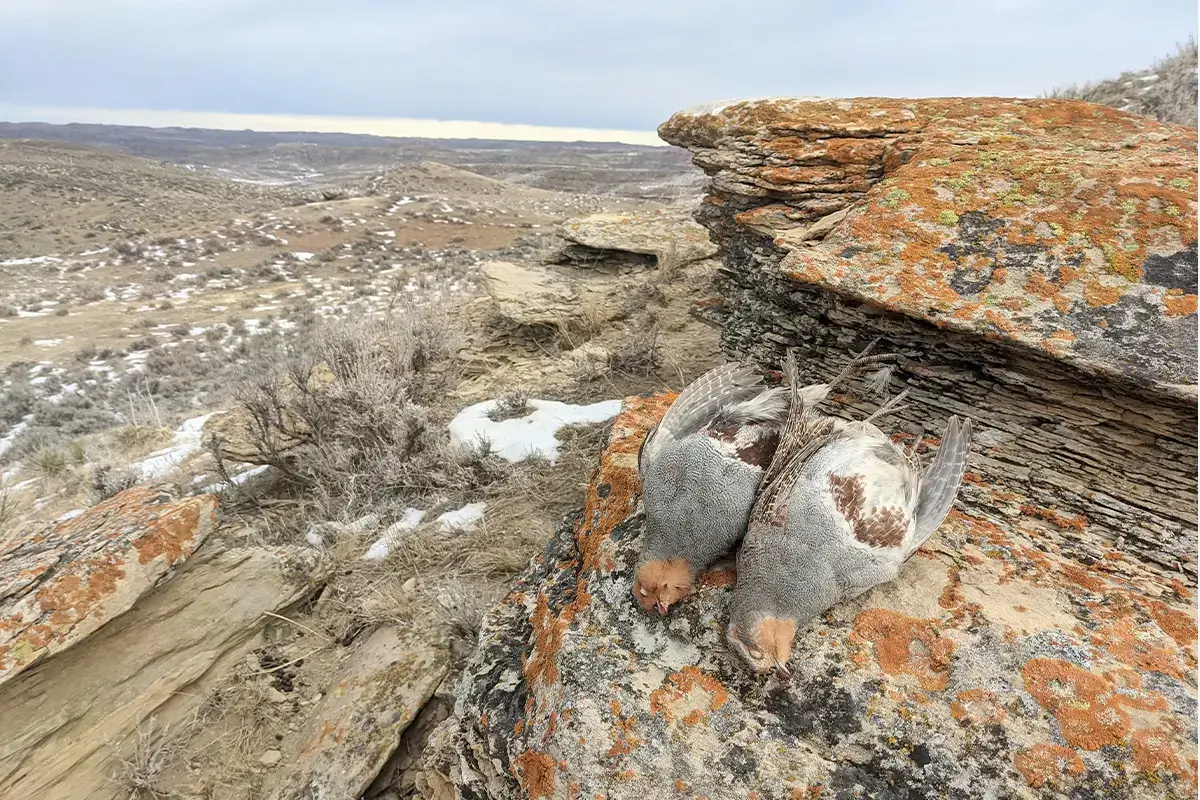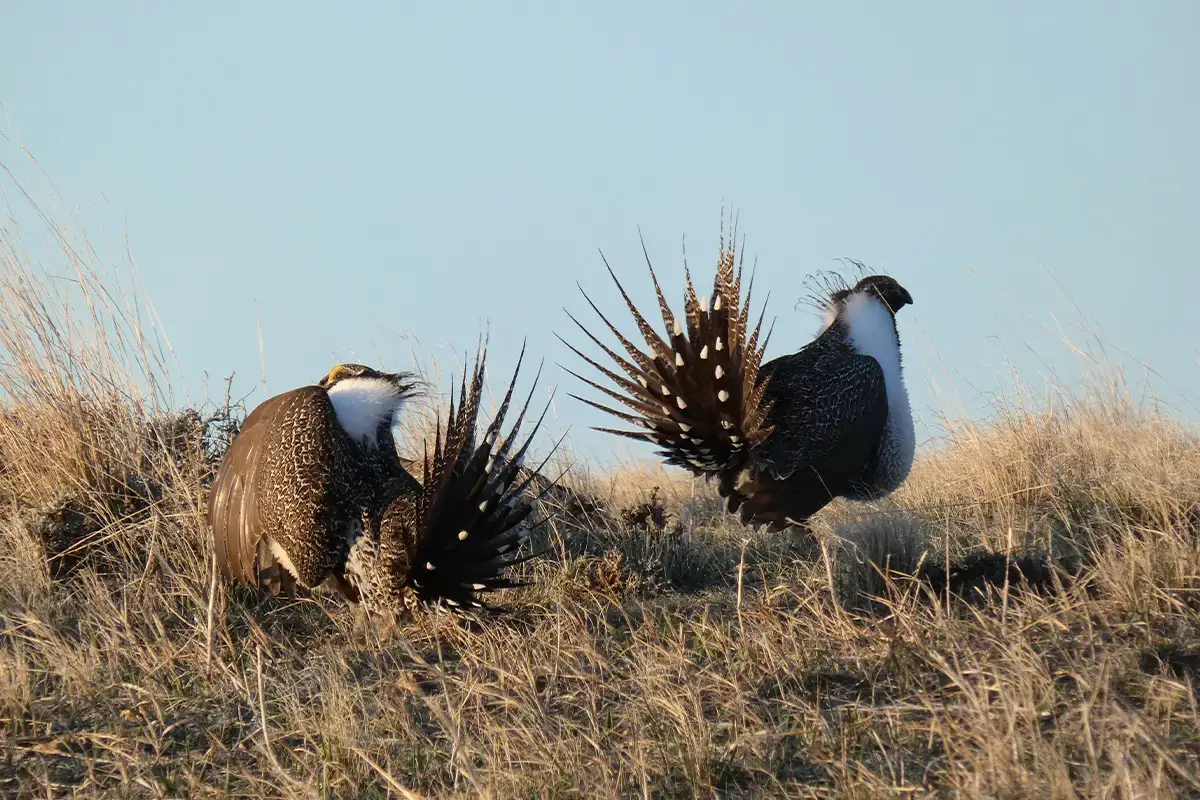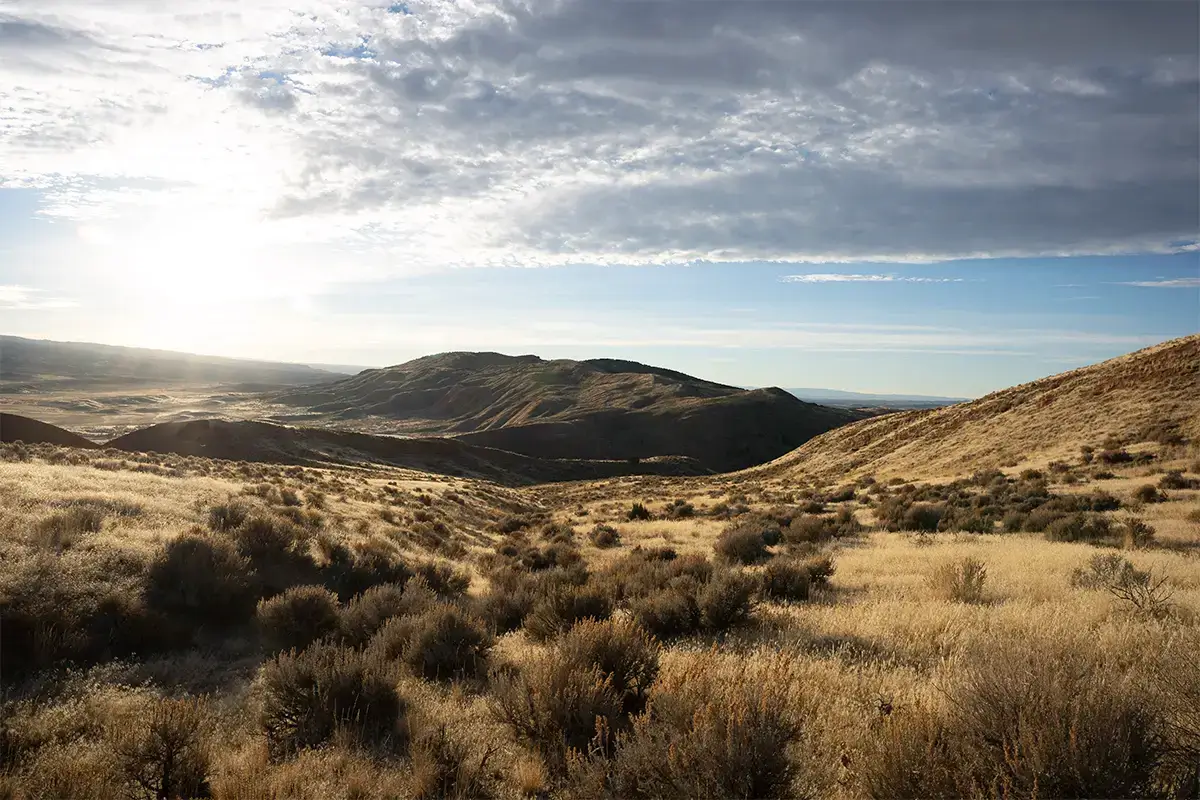Bird Hunting State Spotlight: Wyoming
Whether you’re a resident or looking to travel to Wyoming to bird hunt, it is helpful to understand the distribution and habitats of different upland bird species, as well as conservation issues. (Photo By: Josh Tatman)
Wild Wyoming
Just a decade ago, one never heard of Wyoming mentioned in upland hunting media. But today’s upland hunter is a new breed. More people are interested in immersive hunting experiences that connect them with wild birds in their natural habitats.
Southeast Wyoming
Wyoming’s southeast region holds the largest cities in the state, but you will still find plenty of room to run your dog. The North Platte River defines this region, carving its way up from Colorado, then looping through the prairie south and east of Casper. Along with the Laramie River and other tributes, the lower North Platte creates some of the most fertile farm ground in Wyoming. Mixed fields of corn and winter wheat create ideal habitat for ring-necked pheasants.
While most property in the lowlands is private, there are enough walk-in and public lands for the rooster enthusiast. Torrington is the unofficial pheasant hunting capital of Wyoming. Prairie hills east of the mountains hold native sharp-tailed grouse, especially from Pine Bluffs to Guernsey.
The Laramie Range, Sierra Madre, and Snowy Range hold good numbers of dusky grouse. Still called ‘blue grouse’ by most locals, these birds offer a respite from early season heat on the prairies below. While white-tailed ptarmigan were once present in some of these mountains, they have unfortunately been extirpated, with only a few sightings over the last century. Sage grouse are present to the west of the Laramie Range and along the North Platte basin from the Colorado line to Casper, but their numbers are spottier than in the western portion of the state.
 Dusky grouse are found in decent numbers throughout most of Wyoming. (Photo By: Josh Tatman)
Dusky grouse are found in decent numbers throughout most of Wyoming. (Photo By: Josh Tatman)
Northeast Wyoming
Stretching east from the Bighorn Mountains to the Black Hills along the state line, this region hosts seven upland species with open seasons. Although the Powder River Basin is open for say grouse hunting, the season lasts just a few days, and low bird numbers encourage conservative hunting.
Coveys of Hungarian partridge can be found in the hilly country stretching from Gillette over to the base of the Bighorns. Native sharp-tailed grouse spans the entire area. Look for them wherever you find taller grass and forb cover on rolling terrain.
 A pair of prized Hungarian partridges signal a day well spent in the high prairie country of Wyoming. (Photo By: Josh Tatman)
A pair of prized Hungarian partridges signal a day well spent in the high prairie country of Wyoming. (Photo By: Josh Tatman)
Dusky grouse can be found throughout the Bighorns, but they were extirpated from the Black Hills during the gold rush. Ruffed grouse also occur in the mountains, but their numbers are very sparse.
Desert terrain near Casper is home to a few pockets of chukar. If one tires of all this diversity, there’s still the ubiquitous pheasant in northeast Wyoming. Hunt creek bottoms with cattails for spotty populations of wild ring-necks.
Northwest Wyoming
West of the Bighorns to the Tetons, this region holds some of the wildest country in the state, as well as arguably the best public land access. While you won’t find sharp-tailed grouse west of the Bighorns, six other upland bird species are present and huntable.
The Wind River, Gros Ventre, and Teton mountains hold good numbers of ruffed grouse wherever the aspens are thick, and every mountain range in the region has duskies. This part of Wyoming is a mecca for sage grouse hunters, with expansive habitat occurring in the southern Big Horn Basin and Wind River Basin. However, Jackson Hole is closed to say grouse hunting due to low bird numbers. A few spruce grouse occupy western Yellowstone Park, but this area is closed to hunting.
 The iconic sage grouse calls home to many regions of Wyoming, although hunters need to familiarize themselves with where and when these birds can be hunted. (Photo By: Josh Tatman)
The iconic sage grouse calls home to many regions of Wyoming, although hunters need to familiarize themselves with where and when these birds can be hunted. (Photo By: Josh Tatman)
Chukar and Hungarian partridge love higher elevation desert terrain around the basin margins. They tend to boom or bust depending on the year’s moisture and insect production. The Big Horn River valley has good pheasant hunting, mostly on private land. In fact, rooster numbers in this desert valley can rival those of the North Platte farmland to the east.
 Plan to hike up into the hills to locate Chukar. (Photo By: Josh Tatman)
Plan to hike up into the hills to locate Chukar. (Photo By: Josh Tatman)
Southwest Wyoming
Extending south from the Wind River Range, this region captures the vast Red Desert and the upper Green River watershed. This region is overlooked by most traveling hunters, but it’s hard to find a better playground for the grouse aficionado.
Healthy sage grouse numbers occupy every basin. The Wyoming Range, Salt River Range, and Uinta mountain foothills have some truly wild ruffed grouse covers that can rival those in the upper Midwest.
Dusky grouse are less plentiful than in northern reaches but can be found in the Wyoming Range and Salt River high country. While there’s Columbian sharp-tailed grouse south of Rawlins, their numbers are dwindling and are not open to hunting.
Much of this region is devoid of pheasants, but you can find a few in the Bridger Valley. Wild chukar live in rough country flanking Flaming Gorge and near Kemmerer, while Hungarian partridge can be found in the Star Valley.
Wyoming PublicAccess
Both federal and state public lands are open to bird hunters. Unlike other parts of the country, state lands can be legally accessed without permission from grazing permittees. That’s assuming a public road touches the state parcel.
Unfortunately, a significant number of state parcels are completely landlocked by private property. The same is true of many Bureau of Land Management parcels, especially in southern Wyoming, where a checkerboard of federal and private lands flanks the Union Pacific railroad. At this time, the legality of crossing from one public land corner to another is contested.
Most forest grouse habitat is federal Forest Service land, but private holdings occur. Bureau of Reclamation lands exist along several reservoirs, and there’s some National Grassland property in northeast Wyoming.
 Wyoming boasts an abundance of public land for bird hunters to explore. (Photo By: Josh Tatman)
Wyoming boasts an abundance of public land for bird hunters to explore. (Photo By: Josh Tatman)
In addition to public lands, Wyoming Game and Fish negotiates access to private land. Walk-In Areas (WIAs) can be accessed by all hunters and are one of the best options in lowland agricultural areas. When purchasing licenses, hunters can voluntarily contribute to the Access Yes program to fund WIAs. Hunter Management Areas (HMAs) also give access to private property. Each HMA has different rules, but all require that hunters apply for access permission slips.
OnX Maps is an invaluable tool on the ground to sort out all of these property ownership types. It’s important to be able to show your route and ownership should anyone question your presence.
Wyoming Hunting Regulations
Consult Wyoming hunting regulations before heading into the field. Most bag limits are the same statewide, but for say grouse and pheasants, there are varying regulations in each hunt area.
Hunters must use a shotgun with a shell capacity of three or less. Forest grouse can also be taken with a bow or small caliber rifle. More information can be found here.
Safety and Planning
Stock your off-road-ready vehicle and strap vest with plenty of food, water, and warm layers—and a good first aid kit for both you and your dog. It’s not uncommon to find yourself a few miles from your vehicle. Carry cable cutters in case your dog encounters a trapper’s snare, pliers for porcupine quills, and tweezers for cactus.
Chasing birds in the wilds of Wyoming requires self-sufficiency. If you get yourself into trouble, it’s likely there will be no one around to help. Consider carrying a personal locator beacon, as many bird covers in Wyoming have no cell phone reception. Communicate your plans with someone, try to anticipate hazardous situations, and have a game plan for your worst-case scenario.
While Wyoming is blessed with beautiful landscapes and a variety of hunting opportunities, these are fragile resources. Consider your impact on the land. Kill conservatively, leave no trace of your passing, and seek out ways to give back. Together, upland hunters can ensure that Wyoming’s birds and the places they call home remain healthy and wild for future generations.



Comments are closed.